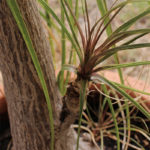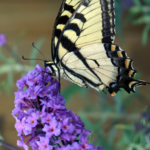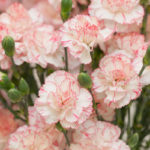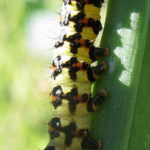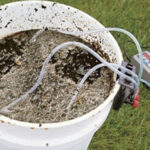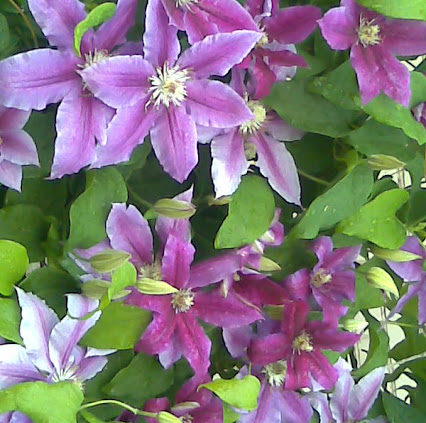
Clematis Flair
How to Grow & Care for Clematis Flair
The popularity of using the Clematis for refreshing walls and borders in home gardens has grown exponentially over the past decade. Clematis is a genus of around 300 species belonging to the buttercup plant family. From the Ancient Greek clématis meaning the climbing plant, this plant is often used to add a decorative flair to walls and fences. Not all Clematis plant types climb and are used as a perennial garden border. These plant species and cultivars have been often named after their originators or particular characteristics. Most Clematis species are known for being very hardy plants. Some varieties can reach a height of 30 feet while others mature between 6 and 8 feet tall. Most clematis varieties produce single flowers and possess blooms that change colour often, sometimes very considerably. Most gardeners like to cultivate the large flower-flowered types. These plants have a light scent that fills the surrounding air with a delightful fragrance. The flourishing pastel blooms of Clematis Flair will add that extra something too boring decks with the bonus of more privacy.
Clematis Care
 The Clematis is basically a flowering vine and requires a little care not exceeding the unreasonable effort. These vines need to be kept moist especially during hot weather so a lot of watering is necessary. They should be watered deeply and frequently until the plant is established. During hot dry conditions, these plants may need up to 5 litres of water twice a day but normally will only require a deep soaking two to three times a week being sure not to use more than 3 gallons of water a week. Clematis should also be planted in well-drained soil. This plant species is often killed due to overwatering and bad drainage so be aware of these two factors. It is best to deposit the crown of the plant a minimum of 2 inches below the ground’s surface, which improves plant health by encouraging stem growth. This growth helps fight Clematis Wilt which is a fungus disease caused by spores that makes the foliage and stems become extremely dry and wilt. The higher amount of stems the more protected the roots. Any leaves that grow beneath the soil should be removed. They achieve the best results when the roots are kept cool and their foliage is in the sun. Slow time released fertiliser it the best kind of fertiliser to use on this flowering vine.
The Clematis is basically a flowering vine and requires a little care not exceeding the unreasonable effort. These vines need to be kept moist especially during hot weather so a lot of watering is necessary. They should be watered deeply and frequently until the plant is established. During hot dry conditions, these plants may need up to 5 litres of water twice a day but normally will only require a deep soaking two to three times a week being sure not to use more than 3 gallons of water a week. Clematis should also be planted in well-drained soil. This plant species is often killed due to overwatering and bad drainage so be aware of these two factors. It is best to deposit the crown of the plant a minimum of 2 inches below the ground’s surface, which improves plant health by encouraging stem growth. This growth helps fight Clematis Wilt which is a fungus disease caused by spores that makes the foliage and stems become extremely dry and wilt. The higher amount of stems the more protected the roots. Any leaves that grow beneath the soil should be removed. They achieve the best results when the roots are kept cool and their foliage is in the sun. Slow time released fertiliser it the best kind of fertiliser to use on this flowering vine.
How and When to Prune a Clematis
When most gardeners consider growing Clematis they are intimidated by the thought of maintaining the plant varieties through pruning. However, one of the most beneficial keys to successful pruning is timing. The blooms from last year’s growth can be pruned back as soon as they have finished blooming in the spring. This allows time for new growth and set buds for the next year. Summer and Autumn bloomers do not necessarily need pruning but they continue to grow and grow so if you are going to prune them it is best done while they are dormant or just coming out from dormancy.
Propagating Clematis by Cuttings
Clematis are propagated using hardwood cuttings in late autumn to early winter, you will need a cutting 8 inches long cut below a node dipped in hormone powder and planted in free draining soil such as sharp sand. The down side is the clematis cutting can take a while to strike unless you use bottom heat in a propagator. If you haven’t got a propagator there are various other items you can use around the house, for instance,
- the top of a hot water service is fabulous
- under floor heating, this is the number one spot, the exact temperature needed
- use the long tube Christmas lights made into a coil inserted into gravel, this will provide bottom heat as well,
these are a few things that you can use for bottom heating to propagate your clematis cuttings.



